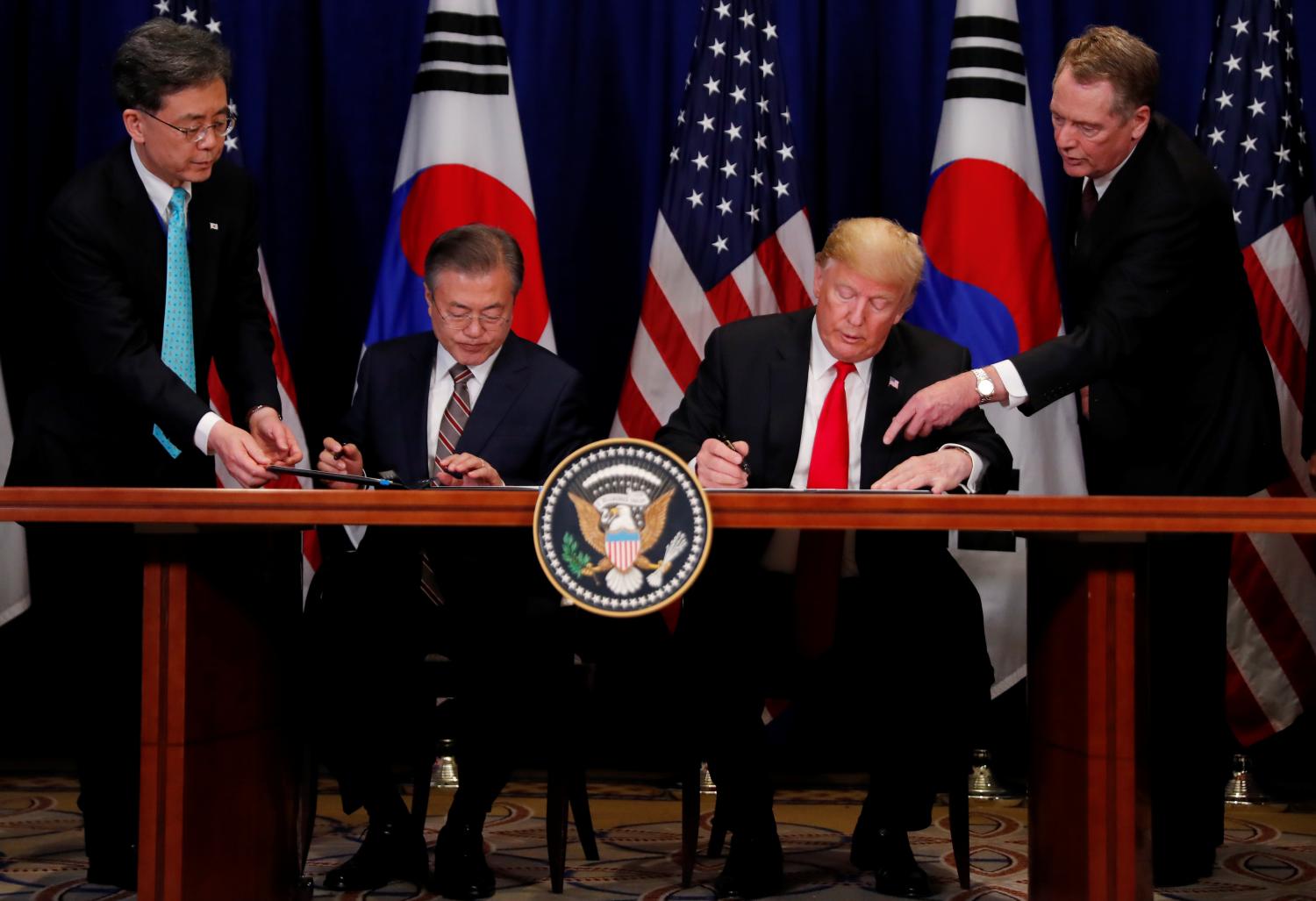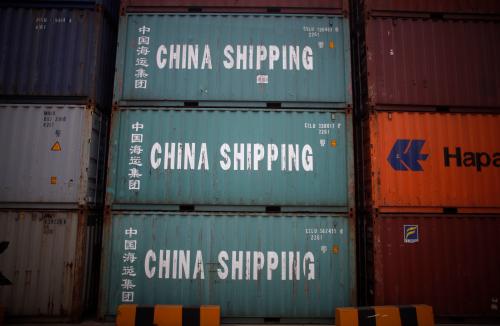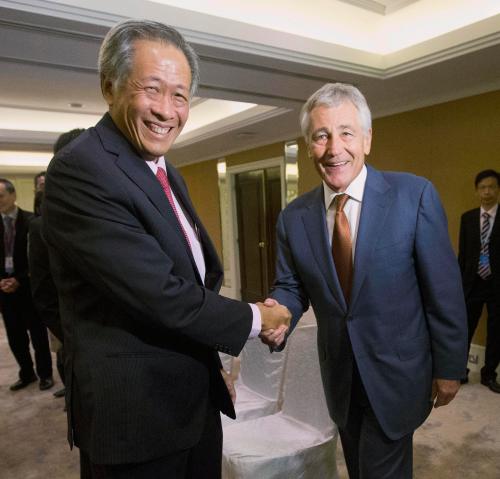This piece was originally published by the East Asia Institute (EAI) as part of a project with the Center for East Asia Policy Studies (CEAP) at Brookings examining prospects for U.S.-South Korea cooperation in an era of U.S.-China strategic competition. A webinar was hosted by CEAP and EAI on November 13, 2020 to discuss the issues presented in this and other project working papers.
Executive Summary
The United States and China are locked in a dynamic of strategic competition across a wide array of domains covering the military, economy, and technology. Increasingly, the contest is acquiring overtones of system-to-system competition, in what is frequently depicted as a zero-sum contest between open and authoritarian societies. Economic interdependence could very well become a casualty to intensified U.S.-China rivalry. Given the high degree of economic integration between the two largest economies in the world, wholescale decoupling would entail prohibitive costs, but there are also questions as to whether China and the United States have the political will and wherewithal to execute a more limited detangling of their economies (with a likely focus on emerging technologies).
The implications for Asian countries are profound. The takeoff of many economies in the region has been predicated on a relatively open, rules-based trading system and a stable regional environment underpinned by American leadership. China’s fast-paced growth and its incorporation into the trading system led to growing levels of regional integration as attested by China’s current place as top trading partner for all countries in Asia. A key driver of this regionalization was the expansion of cross-border supply chains which aimed to maximize efficiency by tapping into the comparative advantages offered by different locations and could thrive in an environment of policy predictability and moderate geopolitical tension.
No such conditions exist today. Concerns with China’s market-distorting policies have intensified. These include the widespread use of state subsidies to champion specific industries, the lack of a playing field due to the preferences and perks awarded to state-owned enterprises (SOEs), restrictions on foreign direct investment (FDI), and its closed digital ecosystem. China’s doubling down on its state-capitalism model to achieve self-sufficiency in emerging technologies — if successful — has implications for the future of the existing regional division of labor for economies which have hitherto engaged in high-tech trade with China (South Korea, Japan, and Taiwan, for instance). Moreover, the rise of Chinese economic power has also created worries that Chinese leadership may exploit economic interdependencies during episodes of bilateral friction (the restrictions on Australian cotton imports are just the latest episode).
The United States and its partners in the region, including South Korea, share many of these concerns. However, the sharp fluctuations in U.S. foreign economic policy and a transactional approach to alliances over the past few years have precluded effective collaboration among like-minded countries to address the China challenge. A singular handicap for the United States is its growing marginalization of the emerging regional economic architecture and its inability to articulate a long-term strategy of economic engagement with the region. This paper explores these challenges and identifies opportunities for the United States and South Korea to work together in shoring up a rules-based regional economic architecture.







